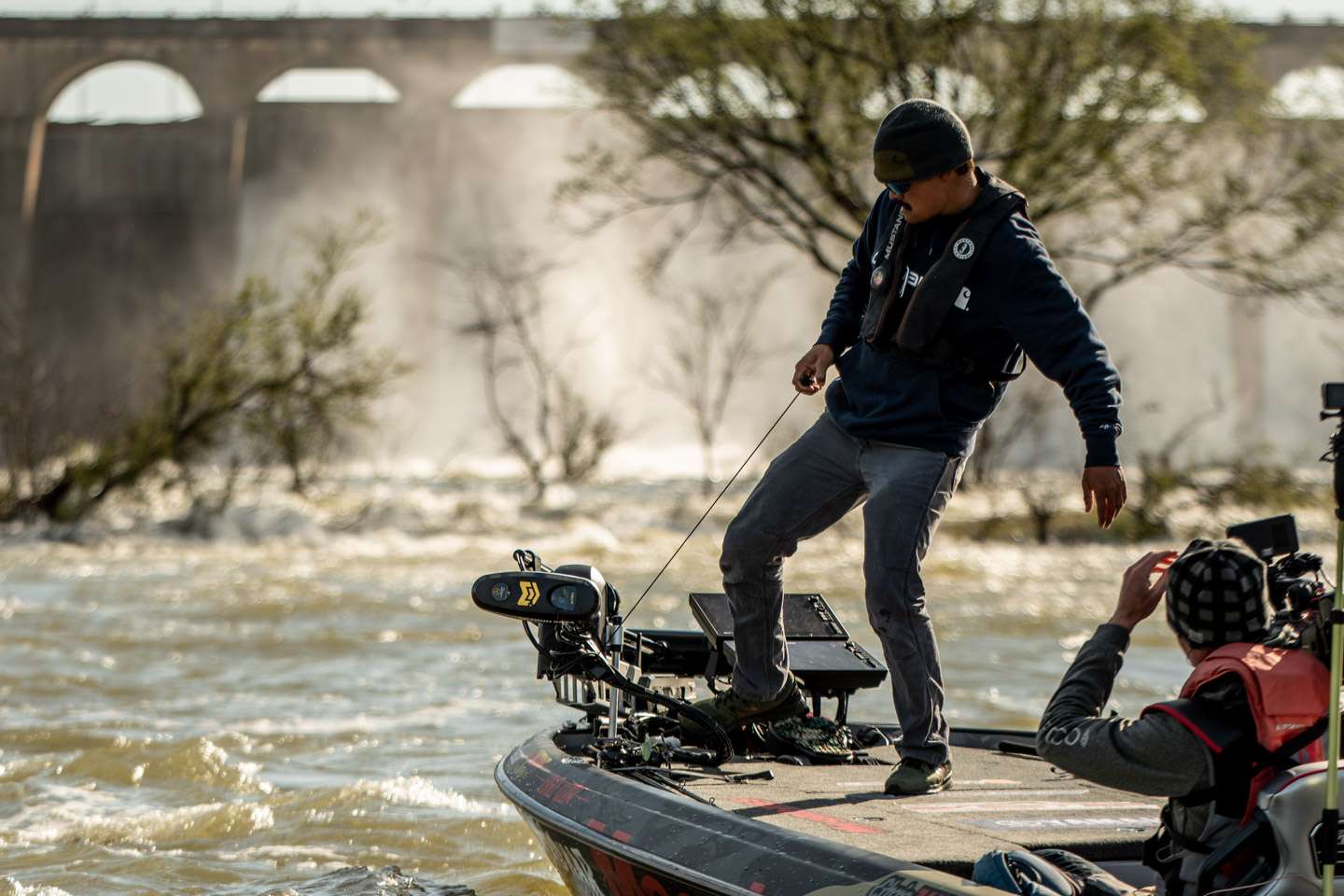
The 2021 Guaranteed Rate Bassmaster Elite at Pickwick Lake saw Chris Zaldain committing to the Wilson Dam tailrace. Zaldain’s dedication to the turbulent water showed where his best potential limits were found during early competition.
The premise was simple: Following a massive storm system, Wilson Dam was spewing an average of 178,170 cubic feet per second. The concentration of inflow interacting with emergent islands and submerged boulders created a dynamic feeding zone where thousands of baitfish swirled in bountiful vulnerability.
It may look like an exercise in randomness, but as Zaldain notes, success hinges on strict adherence to a set of dos and dont’s.
DO identify the current seams. These areas with slower water adjacent to the fierce flow allow predators to hold in ambush spots without fighting the full force of rushing water.
Seams are created by deflection, as water moves around solid objects. For this, Zaldain said his Humminbird MEGA 360 plays an invaluable role.
DON’T get lazy with the casting angles.
“I was trying 90-degree and letting the bait sweep down and I was trying 45-degree, I was trying the 180 straight ahead,” Zaldain said. “I like that 45-degree cast; it gives you more control.”
DO work to establish specific casts that allow for a natural presentation through the strike zone. Easier said than done, but Zaldain’s meticulous breakdown of his target areas allowed him to make surgical casts — always upcurrent — and then sweep his bait in front of feeding fish.
“It’s all timing and threading the needle in those seams,” he said.
Also, Zaldain makes bomb casts, as the longer his bait’s in the water, the more time he has to guide it into the precise alignment.
DON’T drag baits on the bottom; keep them a few inches above the heavy structure.
“If you start to bump the bottom, start reeling faster,” he said. “If you get hung up in that current, your boat starts pushing downcurrent and you’ll snap it off.”
DO pay close attention to boat positioning, relevant to what the flow tells you.
“This is is a water-reader’s (scenario); you have to let your boat show you where the current breaks are,” Zaldain said. “If you set up in the current, eventually, it will push you into the breaks, into the eddies. At that time you’re looking for the underwater structure — the actual current breaks.
“You don’t always visually see the eddies. You can use your eyes, but also use your boat because that fast current pushes you out of the way and it ends up swirling you in some of the current. Let the natural sweep of the current position your boat, so you’re not fighting the current the whole time.”
DON’T get discouraged with bycatch. Yesterday, Zaldain’s largemouth and smallmouth catches were interrupted by striped bass, blue catfish, drum and white bass.
“I saw seagulls, pelicans and terns diving on shad that were 5 to 6 inches long, so everything is eating up there,” Zaldain said. “Predators set up where the baitfish are washing down. Everything feeds through there.”
Zaldain surely would have preferred to avoid wasting time with 20 drum and several line-sliming catfish, but these and other bycatch species rub elbows with largemouth and smallmouth bass. Make enough casts and you’ll get a bait in front of the right ones.
In 2011, Davy Hite notched his eighth Elite win at the Wilson tailrace. The potential for another big event lives here. If someone can diligently follow the dos and don’ts, a massive sack of Pickwick bass could be holding in the next current seam.






